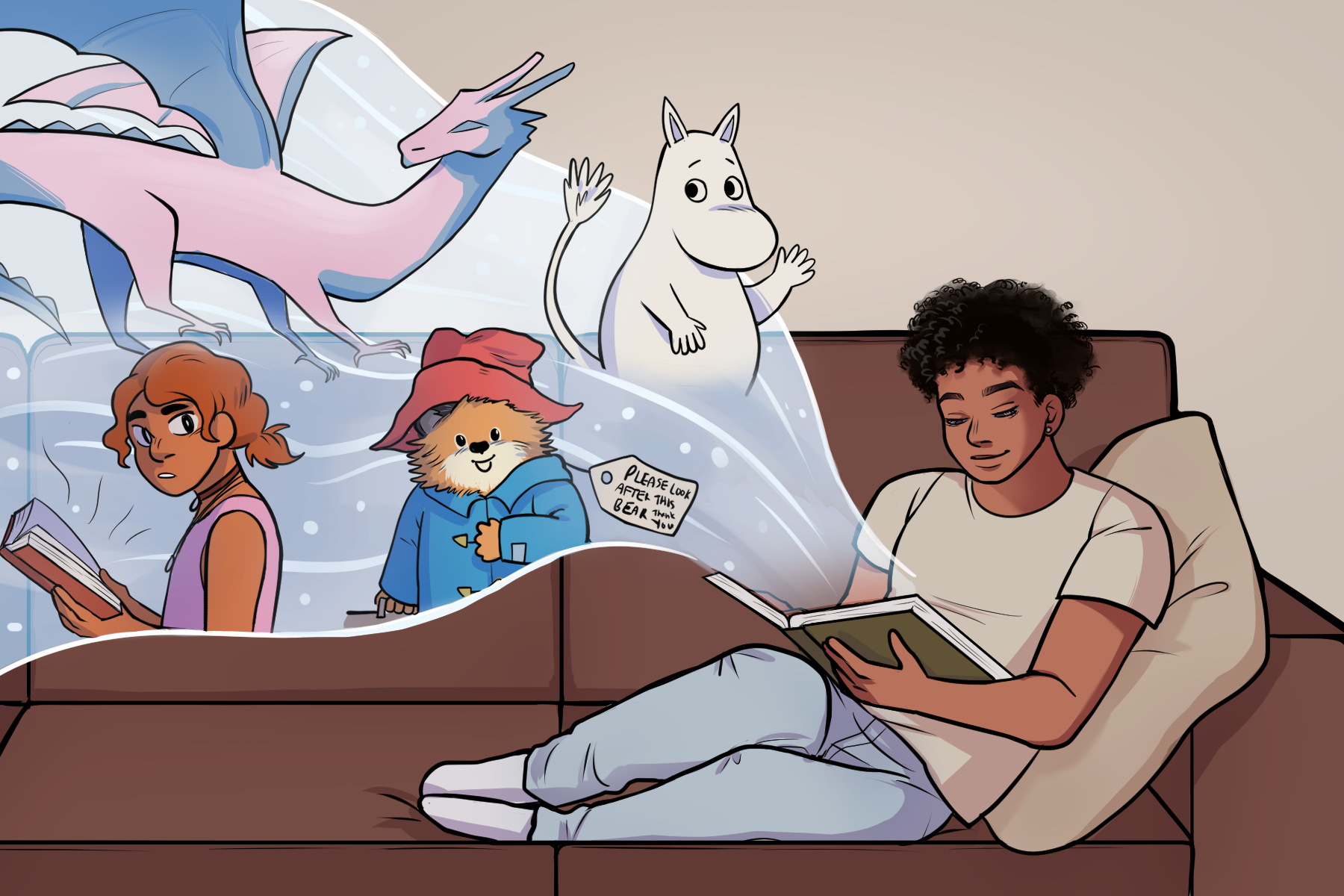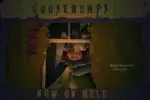Look, I know what you’re thinking. “I’m in college. I’m too old to be reading kids’ books.” Believe me, until a few weeks ago, I thought the same thing. I was more than happy reading the “serious” fiction I had developed a taste for over the past few years — novels by Sally Rooney, Haruki Murakami and the occasional Russian writer who never failed to send me into an existential crisis. Like a lot of English majors, I had this idea that I needed to read challenging and thought-provoking literature, and that books for younger people didn’t fit that ticket. Whenever I went into bookstores or visited the library, I barely glanced at the young adult shelves and certainly never even noticed the children’s books. I thought that I had clearly graduated beyond those sections.
At the time I didn’t think much of this attitude, but since I’ve begun working as a children’s and teen’s bookseller, my perspective has begun to change. I’ve realized I was preventing myself from enjoying these kinds of books due to a sense that it was inappropriate for a college student to be interested in children’s literature. Even perusing through the YA section felt embarrassing to me.
Thankfully, I’ve also realized the errors in my judgment and embraced the enchanting beauty and steadfast hope that runs through the pages of every children’s book. Children’s literature is unblemished in a way that adult literature is not, because children still see the magic in our world that adults have grown accustomed to ignoring. We adults are jaded and mistrustful and find happy endings “sappy,” but for children, they’re necessary and natural. What if older readers went back to the classics that first captured their hearts, and even decided to give recent releases from the world of children’s fiction a try?
Below, I’ve gathered a few children’s books for you to either revisit or try for the first time — three books or series that are considered “classics,” and three that are relatively recent releases by authors who deserve lots of love. Be prepared for some serious nostalgia to come your way.
Classics Children’s Books
“Moominland” series by Tove Jansson
There are few children’s books out there that capture the word “magic” with such spirit and gentleness as the “Moominland” series by Tove Jansson, a Finnish novelist and artist. First published in 1952, the Moominland chapter books and graphic novels take place in a fictional fantastical world called Moominland and particularly in Moomin Valley, home of the Moomin family. There’s Moomintroll, our naïve but goodhearted protagonist; Moominmamma, Moomintroll’s caring and open-minded mother; Moominpappa, his daydreaming father who is forever working on his memoirs; and several more recurring characters including the Snork Maiden, Snufkin, Sniff, Little My and the Hemulen.
Each of them has such a vivid and unique personality, while also representing powerful archetypes that have been threaded through children’s literature for centuries. In each story, this cast of characters takes on adventures that range from everyday tasks to world-threatening scenarios. Jansson’s world is heartwarming and unforgettable, her characters rich with charming idiosyncrasies. There’s a reason the Moomin world has been adapted into TV shows and movies in the years since its conception. Once you’re introduced to Jansson’s fictional universe, you just can’t get enough of it.
“Paddington” series by Michael Bond
Most younger audiences know the name “Paddington Bear” from the recent British films “Paddington” and “Paddington 2,” starring Ben Whishaw as the infinitely kind and exceedingly polite brown bear. Indeed, these movies are pretty much modern classics, but they owe much of their success to the original books by Michael Bond. Like the “Moominland” series, Bond’s first Paddington book, “A Bear Called Paddington,” was published in the ‘50s and soon became a staple of British children’s literature.
For anyone who hasn’t seen either of the Paddington movies (which you should do right away), the “Paddington” series follows Paddington Brown, a bear who was found in Paddington Station by the Brown family. In each story, Paddington explores more and more of London and learns what it’s like to live with a family. He is known to cause trouble unknowingly while trying to do normal human things like taking a bath, going shopping and going on the Underground. His adventures will, without a doubt, cheer you up on the rainiest of days.
“Walk Two Moons” by Sharon Creech
This is one of those novels that, depending on your age, might have been on your elementary or middle school reading lists way back in the day. It’s certainly one of the more popular books by Sharon Creech, who has long been one of my favorite children’s authors. “Walk Two Moons,” which won the 1995 Newbery Medal, is the kind of book that shouldn’t be summarized in a blurb. Helpful as they may be, blurbs tend to suck the magic out of a story, and this story is infused with magic through and through.
To give a very cursory description of Creech’s novel, the plot follows a young girl named Salamanca Tree Hiddle and her journey with her grandparents to Idaho. Along the way, Sal entertains her grandparents with the story of the eccentric Phoebe Winterbottom and eventually makes some important discoveries about her past. Like all incredible children’s books, “Walk Two Moons” is filled with a great deal of heart, but it’s also perfect for readers who love strong, interesting characters.
Newer Releases (And Potential Classics?)
“The Lost Ryu” by Emi Watanabe Cohen
If you love fantasy, and especially fantasy that involves dragons, then new author Emi Watanabe Cohen’s debut, “The Lost Ryu,” is a must-read. This novel takes place in an alternate Japan, 20 years after World War II. In this society, humans have pets called “ryū,” small dragons who grow up as companions to their humans. But before the war, there were big ryū, too — and somehow, 10-year-old Kohei Fujiwara remembers them. Kohei knows his memory should be impossible. So why does it feel so real?
In this story, Kohei goes on a quest to find the big ryū, partly to find out more about his past and partly to bring peace to his family. There are so many reasons to love this novel: Cohen’s writing is wonderfully distinct and memorable, elevated by imagery that feels entirely new, while at the same time making so much sense that you end up wondering where that metaphor or simile even came from. Cohen also expertly touches on issues like generational trauma and the difficulties that many children have with expressing their feelings, among other topics that aren’t too easy to weave into children’s stories. The author pulls it off brilliantly, resulting in a story you won’t soon forget. (Plus, Cohen wrote this book in college, a fact that I gawked at when I first found out. Needless to say, that takes a certain kind of talent.)
“The Night Diary” by Veera Hiranandani
Not many American readers know much about the history of India’s independence from the British Empire or the partition of India in 1947, even readers with Indian heritage like myself. Veera Hiranandani’s 2018 novel, “The Night Diary,” helped me to learn about the devastating effects of partition from a much more human point of view than a Wikipedia article. The novel, which received a Newbery Honors medal, takes place right when Partition happened.
As the plot unfolds, it follows a young girl named Nisha and her family as they are forced to leave what is now Pakistan and head to the “new India” where they will be safe. The story is told through Nisha’s letters to her late mother, who was Muslim, even though Nisha’s father is Hindu. Because her parents are both Hindu and Muslim, Nisha feels like she is both — which makes the violent conflict between the two religions even more painful. As she and her family make the dangerous journey across the border, Nisha struggles to understand why her country must be split up.
“The Witch Boy” by Molly Knox Ostertag
If you’ve kept up with graphic novels over the last few years, you might have already heard of “The Witch Boy,” Molly Knox Ostertag’s debut graphic novel for middle-grade readers. Now followed by two sequels, “The Witch Boy” tells the story of Aster, a boy who lives in a magical community where women are witches and men are shapeshifters. Aster, like all boys in his community, is expected to train as a shapeshifter — but his heart is drawn to witchcraft.
Despite all of the discouragement he receives from his parents and peers, Aster practices witchcraft in secret. He doesn’t understand why boys can’t be witches, and girls can’t be shapeshifters. Shouldn’t everyone be free to do what they love and be who they are? This beautifully written and illustrated graphic novel not only tells a great story, it also provides timely commentary on gender roles and the harm they can inflict on children growing up. I was pleasantly surprised by Ostertag’s ability to weave social issues into a compelling plot for kids and adults alike.

















